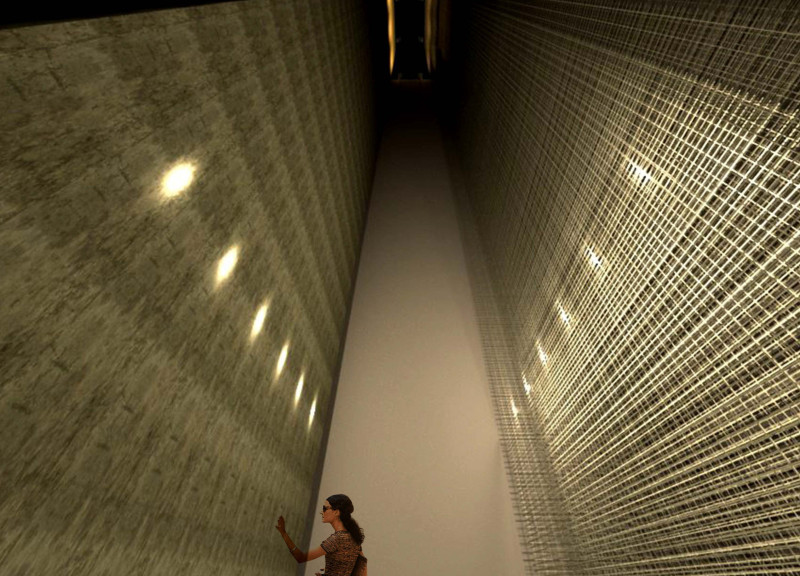5 key facts about this project
The Last Genocide Memorial is situated at Donald M. Gordon Chinguacousy Park in Brampton, Canada, serving as a space for reflection on the atrocities of genocide and the enduring spirit of survival. The design aims to create an immersive experience that encourages visitors to confront difficult historical narratives while also finding moments of hope and remembrance.
Spatial Experience
The layout features a downward circulation path that guides visitors into a series of enclosed spaces. This descent symbolizes a journey into deeper thoughts about historical trauma, fostering a contemplative atmosphere. The shifting dynamics of light and volume add to the experience, as tight corridors lead to larger areas with higher ceilings. This movement allows visitors to feel a release from the weight of history, restoring a sense of clarity and connection with the space.
Conceptual Framework
Central to the memorial is a tower divided into two distinct sections, embodying the struggle between good and evil. This separation encourages interaction with the underlying themes of the design, prompting visitors to reflect on their role in societal narratives. The physical division of the tower emphasizes the complexity of history, serving as a reminder of the continuous conflict between light and darkness within human experiences.
Materiality and Aesthetic
The presentation does not specify the materials used in the construction, which puts a focus on the design and spatial qualities. By not detailing materials, the project highlights how architecture can communicate its themes through shape and proportion. This strategy allows for an exploration of the aesthetic elements that align with its purpose, emphasizing the importance of the overall visual impact without relying on specific building materials.
The arrangement of spaces creates a balance between openness and enclosure. Light seeps into constricted areas, suggesting a blend of memory and hope. Visitors navigate through these transitions, helping to manifest the dual themes of sorrow and resilience inherent in the memorial.





















































